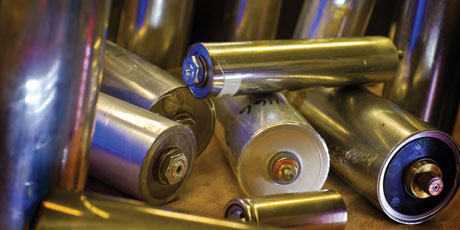ped police
Rule-Breakers Beware
New test for performance-enhancing drugs up to 1,000 times more sensitive than current methods

Daniel W. Armstrong
Sports at their highest levels have been rocked in recent years by revelations of performance-enhancing drug use by top athletes. But catching potential rule-breakers may soon become easier, thanks to a new test developed by UT Arlington chemists.
Daniel W. Armstrong, the Robert A. Welch Chair in Chemistry, and Hongyue Guo, a graduate student in his lab, made headlines last year when they announced a test to detect evidence of performance-enhancing metabolites that is up to 1,000 times more sensitive than current methods.
The new strategy is a variation on a common testing technique called mass spectrometry, which the International Olympic Committee and the U.S. Anti-Doping Agency routinely use to ensure athletes are clean. Mass spectrometry separates compounds by mass, allowing scientists to determine the component parts of a mixture. However, since metabolites are small and have a negative charge, they may not produce a signal strong enough for the instrument to detect.
The method Dr. Armstrong’s lab has pioneered, paired ion electrospray ionization, helps boost that signal by gathering several of the performance-enhancing metabolites in the sample together, thus making them more obvious to the detector.
“How much of a drug someone took or how long ago they took it are beyond the analyst’s control,” Armstrong explains. “The only thing you can control is how sensitive your method is, and we may have developed one of the most sensitive in the world.”

















